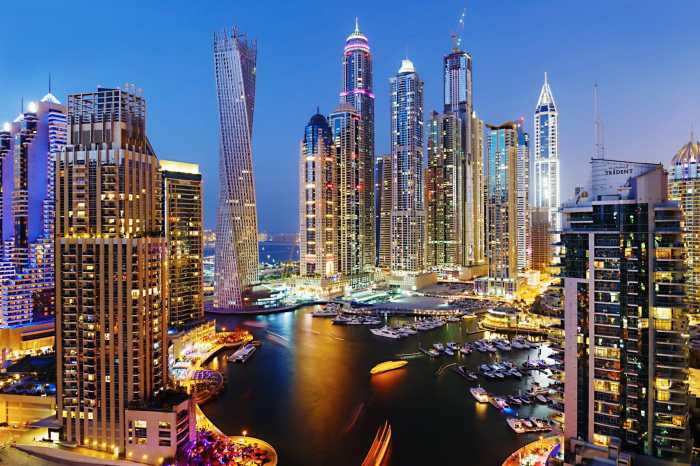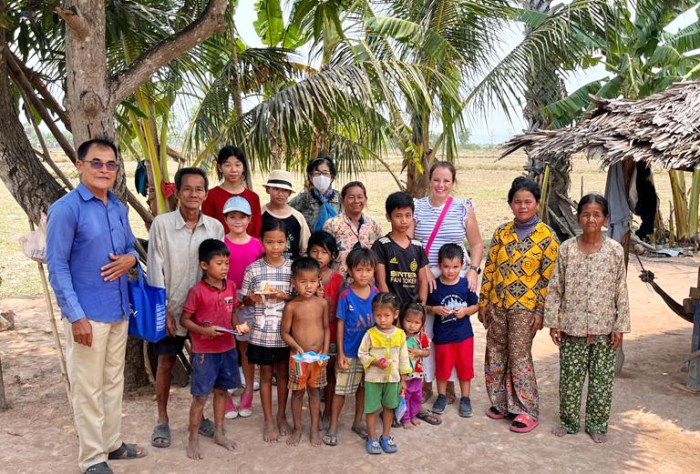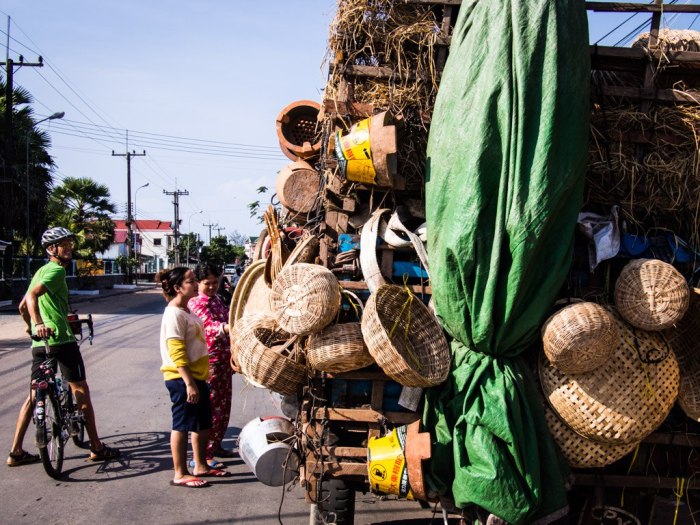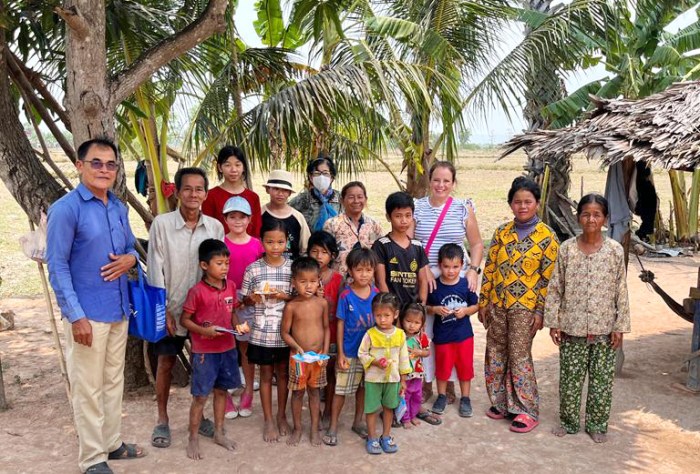Dubai Museum of the Future opens, promising a glimpse into tomorrow’s marvels. This innovative museum, a testament to Dubai’s ambition, is set to redefine the visitor experience with interactive exhibits, groundbreaking technology, and a futuristic architectural design. From its unique exhibits exploring the future of transportation to its immersive interactive elements, the museum aims to not only entertain but also inspire a new generation of innovators.
Its design, blending cutting-edge materials and sustainable practices, reflects Dubai’s commitment to progress and environmental responsibility. The opening promises a significant boost to Dubai’s economy, attracting tourists and investors alike, while simultaneously positioning Dubai as a global hub for innovation.
The museum’s exhibits delve into a wide array of futuristic concepts, from sustainable energy solutions to advanced medical breakthroughs. Interactive displays will engage visitors in hands-on exploration of these concepts. The museum’s architectural design is equally impressive, featuring an innovative exterior and interior that seamlessly integrate cutting-edge technology and sustainable principles. Visitors can anticipate a truly immersive experience, showcasing Dubai’s forward-thinking approach to the future.
This is more than just a museum; it’s an experience.
Introduction to the Dubai Museum of the Future
The Dubai Museum of the Future, a striking architectural marvel, stands as a testament to Dubai’s ambition to shape a future-forward vision. More than just a museum, it’s an immersive experience designed to showcase innovative technologies and concepts that will potentially redefine the future of human life. Its futuristic design, inspired by the latest in architectural trends, is as captivating as the technologies it houses.The museum’s mission is to explore and exhibit the transformative potential of technological advancements.
It aims to spark curiosity, encourage collaboration, and empower individuals to actively participate in shaping a brighter future. It envisions a society where technology and human ingenuity work in harmony to address global challenges and enhance human well-being. This is not merely a collection of exhibits, but a living laboratory for the future.
Museum’s Projected Impact
The museum’s impact on Dubai’s future is expected to be multifaceted and substantial. It will undoubtedly serve as a global hub for innovation and a catalyst for economic growth, attracting both tourists and experts to Dubai. This influx of visitors and knowledge-seekers will further solidify Dubai’s position as a leading global city and a center for technological advancement.
Furthermore, the museum aims to create a ripple effect by fostering collaboration between governments, businesses, and individuals to solve critical global challenges, potentially leading to new technological breakthroughs and economic opportunities.
Key Features of the Museum
The Dubai Museum of the Future is not simply a static collection of artifacts. It emphasizes interactive experiences, allowing visitors to actively engage with the exhibits and gain a deeper understanding of the concepts presented. The museum’s design and exhibits are geared towards fostering a sense of wonder and curiosity.
| Feature | Description | Example |
|---|---|---|
| Exhibits | The museum’s exhibits will span a range of themes, including sustainable energy, advanced robotics, space exploration, and personalized healthcare. Each exhibit will provide a unique and engaging experience. | An exhibit on sustainable energy might include interactive simulations of different renewable energy sources and their impact on the environment. |
| Interactive Elements | The museum incorporates cutting-edge technologies to provide immersive and engaging interactive experiences. Visitors can participate in simulations, experiment with virtual reality, and interact with robots. | A virtual reality experience might allow visitors to explore a simulated Mars colony, experiencing the environment and challenges firsthand. |
| Architectural Style | The museum’s architectural design is a testament to its future-forward vision. It will incorporate innovative and sustainable building techniques, reflecting Dubai’s commitment to environmental responsibility. | The building’s exterior might incorporate photovoltaic panels, collecting solar energy to power the facility. |
| Sustainability | The museum’s construction and operation will prioritize sustainability. This will involve incorporating energy-efficient systems and eco-friendly materials. | Employing green building materials, minimizing water consumption, and maximizing natural light will all contribute to the museum’s sustainability goals. |
Exhibits and Interactive Experiences
The Dubai Museum of the Future promises to be more than just a static display of artifacts. It’s envisioned as a dynamic, interactive space where visitors can experience the future firsthand. This approach goes beyond traditional museum exhibits, aiming to immerse visitors in the potential and possibilities of tomorrow’s technologies.The museum will leverage cutting-edge technologies to create a truly immersive and engaging experience.
Interactive displays and simulations will allow visitors to explore concepts and scenarios that might otherwise be abstract. This approach is vital to inspiring future innovators and fostering a deeper understanding of the potential of technology.
Types of Exhibits Expected
The museum will feature a diverse range of exhibits, moving beyond static displays to incorporate interactive experiences. These exhibits will cover various themes, from sustainable energy solutions to advanced transportation systems, artificial intelligence, and space exploration. This variety aims to appeal to a broad audience and spark curiosity about the future.
Interactive Technologies and Experiences
The museum will utilize a variety of interactive technologies to bring these concepts to life. Virtual reality (VR) simulations will allow visitors to experience future cities, explore space missions, or even interact with robots in realistic scenarios. Augmented reality (AR) overlays will add another layer of interactivity, overlaying digital information onto the physical world. These immersive technologies will enhance visitor engagement and understanding.
For instance, a virtual reality experience could simulate a journey to Mars, allowing visitors to see the planet and its surface in a realistic, engaging environment.
Accessibility Design Considerations
Ensuring accessibility is a key design consideration. The museum will employ a multi-faceted approach to accommodate visitors with diverse needs. This includes clear signage in multiple languages, audio descriptions for exhibits, tactile models for visual impairments, and adjustable seating arrangements for mobility challenges. Moreover, the interactive displays will be designed with intuitive controls and alternative input methods to make them accessible to everyone.
Examples include voice commands, alternative button controls, and large-format displays. By incorporating these measures, the museum will create an inclusive environment that welcomes all visitors.
Comparison of Exhibit Types and Visitor Impact
| Exhibit Type | Expected Impact on Visitors |
|---|---|
| VR Simulations | Immersive experience, allowing visitors to virtually experience future scenarios, fostering deeper understanding and engagement. |
| AR Overlays | Enhancing the real world with digital information, making abstract concepts more tangible and interactive. |
| Interactive Touchscreens | Encouraging active participation, allowing visitors to manipulate data, control environments, and explore concepts in an interactive manner. |
| Model Displays | Visually representing complex systems and technologies in a simplified, accessible way. |
| Hands-on Experiments | Providing opportunities for direct interaction and experimentation with concepts, fostering a deeper understanding and encouraging curiosity. |
Architectural Design and Innovation
The Dubai Museum of the Future stands as a testament to the UAE’s ambition and vision for the future. Its architecture is not merely a structure; it’s a statement about the nation’s commitment to innovation, sustainability, and a forward-thinking approach to design. The building’s form and materials are carefully chosen to reflect its purpose as a hub for showcasing and exploring the possibilities of tomorrow.The museum’s design language blends futuristic aesthetics with a strong emphasis on functionality and environmental consciousness.
This unique blend is reflected in its unique shape and innovative materials, setting it apart from traditional architectural styles. The use of advanced technology and sustainable practices in its construction further reinforces this forward-thinking vision.
Architectural Style and Futuristic Themes
The museum’s design evokes a sense of wonder and anticipation, reflecting its role as a showcase of future possibilities. The sweeping curves and the use of translucent materials create an ethereal, otherworldly ambiance, suggesting the limitless potential of technological advancements. The exterior form subtly alludes to futuristic concepts, like soaring spacecraft or the intricate workings of complex machinery. This futuristic aesthetic is not simply superficial; it directly reinforces the museum’s core mission.
Building Materials and Technologies
The construction of the museum employed a variety of innovative materials and technologies. The exterior’s use of high-performance glass, likely featuring advanced coatings for energy efficiency and optimal light transmission, contributes to both the aesthetic and practical aspects of the design. The building likely incorporates smart glass technologies, allowing for dynamic control over light and heat. Interior spaces likely utilize advanced materials for acoustics and thermal insulation, creating optimal conditions for exhibitions and visitor experience.
The integration of these technologies into the structure is crucial to achieving the building’s sustainable goals.
Visual Representation of Design
Imagine a sleek, organically shaped building, its exterior shimmering under the desert sun. Large expanses of glass, possibly with varying transparency levels, provide a sense of openness and allow natural light to flood the interior. The building’s form, a series of flowing, interconnected curves, creates a dynamic and captivating silhouette. The interior spaces likely feature a combination of open-plan areas for exhibitions and more intimate zones for interactive displays.
The use of soft lighting and carefully considered color palettes likely enhances the overall experience. The combination of these elements contributes to a striking aesthetic that complements the museum’s forward-thinking purpose.
Sustainability Principles
The museum likely employs various sustainable design principles. The use of recycled or renewable materials in construction, coupled with optimized energy efficiency, ensures a minimal environmental footprint. Integration of solar panels or other renewable energy sources is likely, potentially reducing the building’s reliance on traditional energy grids. Water conservation techniques, such as rainwater harvesting or greywater recycling, are likely incorporated.
These sustainability measures align with the broader goals of environmental responsibility, reflecting the UAE’s commitment to sustainable development.
Comparison to Other Futuristic Landmarks
| Landmark | Architectural Style | Key Features | Sustainability Focus |
|---|---|---|---|
| Dubai Museum of the Future | Organic, flowing curves, translucent materials | Integration of advanced technologies, focus on visitor experience | High energy efficiency, potential use of renewable energy |
| The Burj Khalifa | Modern, vertical skyscraper | High-tech construction, stunning height | Limited sustainability features compared to the Museum of the Future |
| The Guggenheim Museum, Bilbao | Modern, sculptural | Innovative design, strong use of metal and glass | Moderate sustainability features, compared to the Museum of the Future |
This table highlights the innovative approach of the Dubai Museum of the Future, emphasizing its focus on both aesthetics and sustainability. Other futuristic landmarks often prioritize distinct aspects, such as height or visual impact, whereas the Museum of the Future combines both aspects.
The Dubai Museum of the Future has opened its doors, showcasing a fascinating blend of innovation and design. Its futuristic aesthetic, reminiscent of some of the most groundbreaking architectural feats, clearly connects to the work of renowned architect, I.M. Pei. To delve deeper into the fascinating world of see im pei architecture , explore the many examples of his work.
The museum’s striking design only adds to its already impressive appeal.
Impact on Dubai and the Region: Dubai Museum Of The Future Opens
The Dubai Museum of the Future promises to be more than just a museum; it’s envisioned as a catalyst for economic growth and a symbol of Dubai’s forward-thinking approach. Its potential impact on Dubai and the wider region hinges on its ability to attract tourists, investors, and innovation-focused companies. This section explores the multifaceted effects this ambitious project could have.
Potential Economic Benefits
The museum’s construction and operation will create jobs in various sectors, from architecture and engineering to hospitality and retail. Furthermore, the museum’s interactive exhibits and innovative displays are expected to attract a significant number of tourists, driving revenue for local businesses and boosting the tourism sector’s economic contribution. The potential for attracting high-net-worth individuals and companies seeking to invest in futuristic technologies and innovative solutions is significant.
This will lead to increased foreign direct investment and generate new economic opportunities within Dubai.
Attracting Tourists and Investors, Dubai museum of the future opens
The unique exhibits and immersive experiences offered at the museum are designed to appeal to a diverse range of tourists, including families, students, and professionals interested in technology and innovation. The museum’s futuristic architecture and design will undoubtedly attract global attention, contributing to Dubai’s growing reputation as a global tourist destination. This increased tourism can generate significant revenue for the city and create a positive image.
Furthermore, the museum’s focus on future technologies and innovation will draw investors seeking opportunities in emerging fields. This attraction of investors will boost Dubai’s position as a hub for cutting-edge technology and entrepreneurship.
The Dubai Museum of the Future has opened, showcasing innovative exhibits and futuristic designs. Thinking about a post-museum getaway? Why not consider a relaxing cruise vacation, exploring some of the best all-inclusive options available? Cruises great all inclusive offer a perfect blend of relaxation and exploration, ideal for unwinding after immersing yourself in the museum’s forward-thinking displays.
Regardless of your choice, the Dubai Museum of the Future is a must-see for anyone visiting the city.
Shaping Dubai’s Image as an Innovation Hub
The museum’s presence will solidify Dubai’s image as a global leader in innovation and technology. Its focus on showcasing cutting-edge technologies and future trends will attract researchers, innovators, and companies seeking to collaborate with Dubai’s emerging ecosystem. This focus on innovation will foster a dynamic environment that encourages knowledge sharing and the development of groundbreaking ideas. The museum’s impact will be visible in the wider region, influencing other cities and countries to embrace innovation and future-oriented solutions.
Comparison with Other Significant Developments
Comparing the Dubai Museum of the Future to other significant developments in the region, such as the Louvre Abu Dhabi and the Burj Khalifa, reveals a unique approach. While those projects have focused on art and architecture, the Museum of the Future uniquely emphasizes innovation and the future of humanity. The museum’s emphasis on interactive exhibits and future-oriented technology distinguishes it from similar projects, attracting a different demographic and emphasizing a unique aspect of Dubai’s vision.
Potential Challenges and Opportunities
| Potential Challenges | Potential Opportunities |
|---|---|
| Maintaining the museum’s relevance in a rapidly evolving technological landscape. | Leveraging the museum’s interactive exhibits to develop educational programs and partnerships with educational institutions globally. |
| Attracting and retaining a skilled workforce to manage and maintain the museum’s complex technologies. | Developing a network of global partners to share expertise and knowledge on future technologies. |
| Balancing the museum’s focus on innovation with the need to attract a broad range of tourists. | Capitalizing on the museum’s unique positioning to create new avenues for attracting tourists and investors from around the world. |
| Ensuring the museum’s accessibility and inclusivity to visitors from diverse backgrounds. | Building on the museum’s reputation to create a thriving ecosystem of innovation and entrepreneurship in Dubai. |
The table above highlights potential challenges and corresponding opportunities that the museum might face. Careful planning and strategic partnerships will be crucial to addressing these challenges and capitalizing on the opportunities to maximize the museum’s impact.
Public Perception and Expectations
The Dubai Museum of the Future, with its ambitious vision, is bound to evoke a wide range of public reactions. Understanding these potential responses is crucial for its success. Will it be seen as a futuristic marvel or a symbol of over-ambition? The initial public perception will undoubtedly shape the museum’s long-term impact and reputation.
Potential Public Reactions
Public reaction to the museum’s opening will likely be multifaceted, ranging from awe and excitement to skepticism and criticism. Initial reactions often depend on pre-existing perceptions and expectations, shaped by various factors like media coverage, personal experiences, and cultural background. A successful museum needs to address diverse viewpoints and manage expectations proactively.
Potential Concerns or Criticisms
Concerns about the museum’s practicality, cost, and accessibility are likely to emerge. Some might question the museum’s relevance or the efficacy of its proposed exhibits. Comparisons to other ambitious projects and potential for disappointment may also arise. Concerns over the potential for exclusionary design, high ticket prices, or a lack of community engagement could also generate criticism.
The sheer scale of the project, combined with the futuristic aesthetic, might lead some to perceive it as overly ambitious or impractical.
Examples of Public Anticipation or Excitement
The futuristic design and innovative technology behind the museum have generated considerable public anticipation. Social media buzz, news coverage, and online discussions have showcased significant interest in the museum. The potential for interactive experiences and advanced technologies is a key driver of public excitement, similar to the anticipation surrounding other technological marvels and iconic structures.
Factors Influencing Public Perception
Several factors could significantly influence public perception. Media coverage, both positive and negative, will play a crucial role. The museum’s accessibility, including ticket pricing and opening hours, will impact public accessibility. Word-of-mouth reviews from visitors, especially early adopters, will carry considerable weight. The museum’s ability to effectively communicate its purpose and value proposition to diverse audiences will significantly shape public perception.
Possible Scenarios for Public Response
| Scenario | Description | Potential Impact |
|---|---|---|
| High Enthusiasm | Public overwhelmingly positive, generating significant media attention and positive word-of-mouth. | Increased visitor numbers, strong brand image, positive media coverage. |
| Moderate Interest | Balanced public response, some positive reactions, but also some criticism. | Sustained visitor numbers, opportunity for adjustments and improvements. |
| Skepticism and Criticism | Predominantly negative reactions, focusing on concerns about cost, practicality, or lack of clarity. | Lower visitor numbers, potential damage to brand image, need for proactive crisis management. |
| Mixed Reactions | Diverse responses, ranging from strong support to considerable skepticism. | Requires careful monitoring and adjustment of strategies to address concerns and highlight positive aspects. |
Technological Advancements on Display
The Dubai Museum of the Future aims to be more than just a museum; it’s envisioned as a living laboratory showcasing cutting-edge technologies and their potential to shape the future. This section delves into the specific technological advancements that will be featured, exploring their practical applications and the potential for innovation they could foster.The museum’s design is intrinsically linked to its mission of showcasing the future.
The Dubai Museum of the Future opening is truly impressive, isn’t it? While imagining the futuristic marvels on display, I’m also reminded of the perfect family getaways available closer to home. For those seeking sun-soaked shores and unforgettable family fun, checking out the best family beaches in Florida, like those found at best family beaches in florida , is a great way to recharge before heading back to contemplate the wonders of the Dubai Museum of the Future again.
It’s all about balancing exciting experiences!
Interactive exhibits will provide visitors with hands-on experiences, allowing them to engage with these technologies and grasp their significance.
Detailed Technological Advancements
The museum will feature a diverse array of technologies, encompassing various sectors. Expect to see displays on advanced robotics, AI-powered solutions, and futuristic transportation systems. This diverse approach reflects the multifaceted nature of technological progress and aims to inspire curiosity across a broad spectrum of disciplines. The museum will use these technologies to demonstrate their real-world applications, providing visitors with a concrete understanding of how these innovations can improve lives.
Future Technologies in Exhibits
Beyond current technologies, the museum’s exhibits will also explore emerging fields like quantum computing, personalized medicine, and advanced materials. These forward-looking displays will project potential future scenarios and their impact on society, inspiring visitors to think critically about the possibilities that lie ahead. Examples of these displays could include simulated environments showcasing the potential benefits of personalized medicine or interactive demonstrations of quantum computing concepts.
Fostering Innovation and Entrepreneurship
The museum will not just showcase technology; it will actively encourage innovation and entrepreneurship. Workshops, seminars, and networking opportunities will be integrated into the visitor experience, fostering a dynamic environment where ideas can be exchanged and potential collaborations can arise. This emphasis on practical application and interaction aims to translate theoretical advancements into tangible outcomes, potentially leading to the development of new businesses and solutions to global challenges.
Integrating Emerging Technologies into Operations
The museum will leverage emerging technologies in its daily operations. This includes using AI-powered systems for visitor guidance and personalized recommendations, and employing virtual reality (VR) and augmented reality (AR) technologies to enhance the visitor experience. These practical applications will serve as real-world examples of how technology can be seamlessly integrated into diverse settings. The museum will likely use big data analytics to track visitor engagement and preferences, allowing for continuous improvement of the exhibits and visitor experience.
Timeline of Technological Advancements
| Year | Technology | Description |
|---|---|---|
| 2025 | Advanced Robotics | Interactive demonstrations of advanced robots performing tasks in various settings, emphasizing their potential applications in manufacturing, healthcare, and daily life. |
| 2028 | Quantum Computing | Simulations and interactive displays illustrating the fundamental concepts of quantum computing, alongside demonstrations of its potential applications in various fields. |
| 2030 | Personalized Medicine | Interactive exhibits showcasing personalized medicine through simulated genetic analysis and treatment plans, exploring the ethical considerations involved. |
| 2035 | Neurotechnology | Exploring neural interfaces and brain-computer interaction, demonstrating potential applications in healthcare and enhancing human-machine interaction. |
Museum’s Potential Role in Education
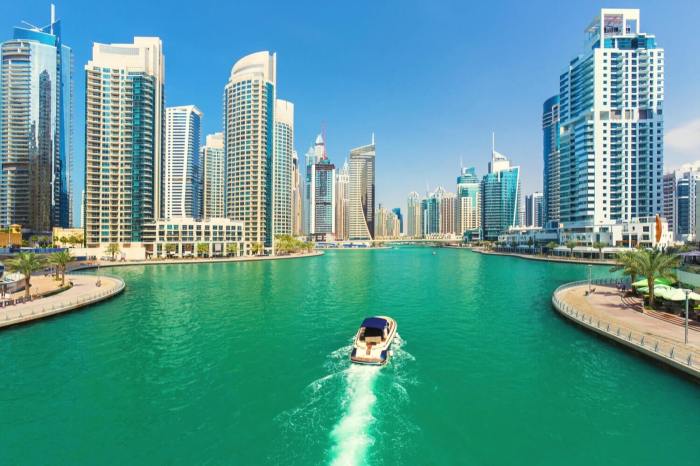
The Dubai Museum of the Future, with its focus on innovation and future technologies, presents a unique opportunity to revolutionize education. It can move beyond traditional teaching methods, engaging learners through interactive experiences and hands-on demonstrations of cutting-edge concepts. This interactive approach fosters critical thinking and problem-solving skills, preparing future generations for a rapidly evolving world.The museum’s potential as an educational resource is substantial.
By combining captivating exhibits with targeted educational programs, it can inspire curiosity and a passion for learning among diverse age groups. This multifaceted approach to knowledge acquisition will empower students to embrace future challenges with confidence and creativity.
Educational Programs and Initiatives
The museum’s educational programs are crucial for maximizing its impact on learners. These programs should go beyond simple explanations and encourage active participation and exploration. Well-structured learning paths, tailored for different age groups, will ensure that visitors of all backgrounds can engage with the museum’s content. This requires a deep understanding of the learning styles of various age demographics.
- Early Childhood Programs: Interactive exhibits focused on fundamental concepts of science, technology, engineering, and mathematics (STEM) will capture the attention of young children through playful exploration. The design should be engaging and visually stimulating, incorporating elements like mini-laboratories and building blocks that demonstrate fundamental principles in a fun way. This will foster an early interest in these subjects, building a strong foundation for future learning.
- Middle School Programs: Curated workshops and hands-on activities will delve deeper into complex scientific principles. Students can participate in simulations of future technologies, engage in coding challenges, and solve real-world problems. Expert facilitators will guide them through these experiences, promoting critical thinking and problem-solving skills.
- High School Programs: Specialized workshops and seminars, possibly featuring renowned scientists and engineers, will provide advanced insights into the future of various fields. Students can explore advanced technologies and participate in debates on their ethical implications, encouraging them to think critically about the future.
Promoting STEM Education
The museum is uniquely positioned to promote STEM education by providing a tangible and engaging learning environment. Exhibits showcasing cutting-edge technologies, like AI or renewable energy, will inspire students to explore these fields. The museum can foster collaboration among students, teachers, and industry experts, creating a vibrant ecosystem for STEM education. The interactive nature of the exhibits will motivate hands-on learning, which is essential for deep understanding.
- Interactive Simulations: Providing virtual reality simulations of space exploration, urban planning, or medical procedures will allow students to experience these fields firsthand, making complex concepts more accessible and engaging.
- Coding Challenges and Workshops: Organizing coding competitions and workshops that introduce students to various programming languages and applications will equip them with essential digital skills for the future.
- Collaboration with Educators: Developing comprehensive lesson plans and resources for teachers will enhance the learning experience and enable educators to integrate the museum’s content into their curriculum effectively.
Potential Impact on Future Generations
The museum’s educational programs will equip future generations with the knowledge, skills, and attitudes necessary to thrive in a rapidly changing world. By fostering curiosity, creativity, and critical thinking, the museum can empower individuals to tackle complex challenges and contribute meaningfully to society. It can cultivate a mindset that embraces innovation and welcomes technological advancements, making them active participants in shaping the future.
| Age Group | Educational Programs and Activities |
|---|---|
| Early Childhood (3-6 years) | Interactive exhibits focused on fundamental STEM concepts; play-based learning; hands-on activities with visual stimulation. |
| Middle School (7-12 years) | Workshops and hands-on activities; simulations of future technologies; problem-solving challenges. |
| High School (13-18 years) | Specialized workshops and seminars; advanced technology exploration; ethical implications of future technologies; critical thinking debates. |
Concluding Remarks
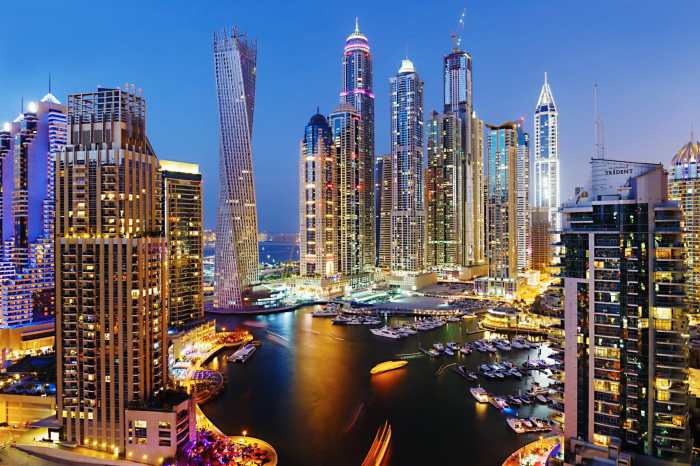
The opening of the Dubai Museum of the Future marks a significant milestone for the city. The museum’s innovative approach to exhibits, architecture, and technology is expected to reshape the visitor experience and solidify Dubai’s position as a global leader in innovation. Public anticipation is high, and the museum’s potential to attract tourists, investors, and inspire future generations is undeniable.
While challenges may arise, the overall impact on Dubai’s future looks promising, making it a truly exciting development.
